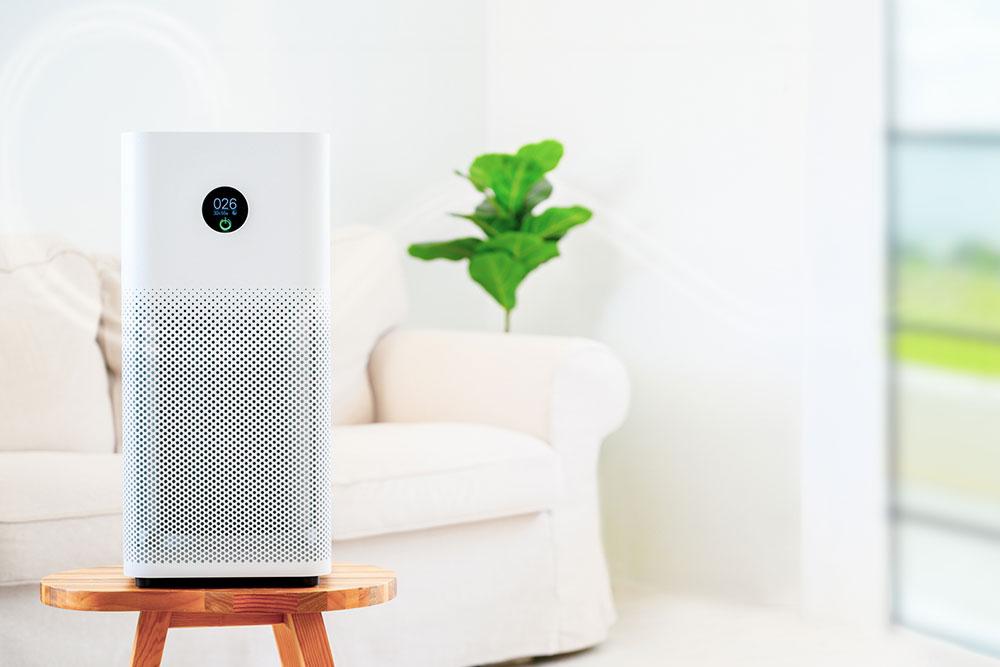6 things to avoid when buying an air purifier

To keep pollutants and allergens from circulating in living, work, and public spaces, air purifiers are worth considering. The appliance can filter dust, smoke, dander, and other disease-causing matter in a space. Today, various air purifiers are available, making choosing the right one tricky. One may even skip considering key factors, bringing home the wrong purifier for their living space. To avoid that, here are a few things to avoid when buying an air purifier:
1. Ignoring room size
Air purifiers come with varying capacities. Some are designed to filter the air in a large space, while others are made for smaller rooms. In addition, there are portable air purifiers—capable of filtering only the surrounding air and not the entire room. With such a wide range of options in terms of filtering capacity, it would be a mistake to overlook the size of the room where the air purifier will be placed. So before buying an air purifier, one should take proper measurements of the room.
2. Not checking the air change rate
The air change rate or air changes per hour (ACH) indicates the number of times the air purifier filters the entire volume of air in a room within an hour. The number can be used to compare air purifiers. However, one should note that different rooms will have different ACH requirements. For instance, if a small room has a lot of plants or pets that tend to stay in that room for the most part, an air purifier of at least ACH 4 is needed. This will help the room air have a lower number of allergens like pet dander and pollen. For larger rooms, an ACH rating of over 6 may be required. So, one should check the ACH to find the right purifier for the room.
3. Overlooking the purpose of the room
Along with the size of the room, it is also crucial to assess the purpose or use of the room. This is because the level of pollutants will differ based on how the room is used. For instance, the level of smoke and particulate matter will be higher in the kitchen than in the bedroom. So, an air purifier that works well for the bedroom may not be equally good for the kitchen. The kitchen may need dedicated air cleaners for smoke, while the one for the bedroom may not need that function. Besides, the purpose of the room also dictates the ACH of the purifier. A higher ACH works for spaces frequented by too many people, such as clinics or doctor offices.
4. Not checking for HEPA filters
Most top-rated air purifiers are equipped with HEPA (high-efficiency particulate air) filters—mechanically pleated filters that are known to easily trap and remove a majority of airborne particles, germs, and other particulate matter in the air. HEPA filters are tested to certify they can remove at least 99.97% of airborne contaminants that are of size 0.3 microns.
One way to know whether an air purifier has a HEPA filter is to check its MERV ratings. If an air filter has a MERV rating of 17 or higher, it is a HEPA filter. Air purifiers that have filters with a MERV rating lower than 17 may often be tagged as “HEPA-like” purifiers, but are not nearly as good as genuine HEPA filters. So, one should examine the product to ensure they get a purifier with a HEPA filter.
5. Not checking for VOC filtration
VOC or volatile organic compounds, like formaldehyde, are toxic airborne particles found in many homes. This is because several popular household products, such as foam insulation, permanent press fabrics, paints, coatings, lacquers, finishes, paper products, and glue, could contain formaldehyde. Even unvented, fuel-burning appliances such as gas stoves or kerosene space heaters can release this compound. VOCs can cause serious respiratory health issues, so it is important to find purifiers that can trap and get rid of these compounds from the air. Generally, active carbon filtration is used to remove VOCs from indoor air. So, indoor spaces that are likely to have high levels of VOCs would require air purifiers that offer activated carbon filtration.
6. Choosing UV-C and ionizing purifiers
UV-C and ionizing air purifiers use ozone to clean the indoor air. Such purifiers may also produce ozone, which can tackle odors, bacteria, viruses, and other microorganisms in the room. However, ozone is also known to trigger or worsen respiratory health problems. So, long-term use of such air purifiers can increase one’s exposure to ozone, leading to health issues. Children and infants are particularly vulnerable to the harmful effects of ozone in the indoor air. Additionally, ozone can damage delicate wiring, electronics, and plumbing inside a space over time. So, while buying an air purifier, one should ensure they choose purifiers that are ozone-free.
To avoid such mistakes, one should do some research and compare air purifiers based on features, price, ratings and reviews, and safety. Then, one should choose the safest option that also offers the most value for money. This can help them ensure they bring home the right appliance to keep pollutants and allergens at bay.

